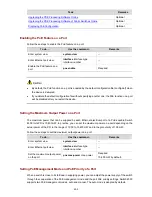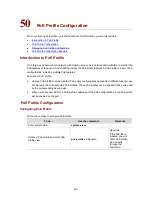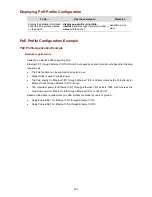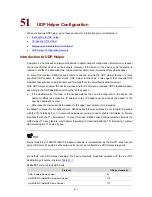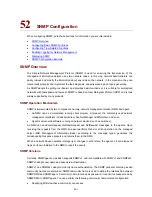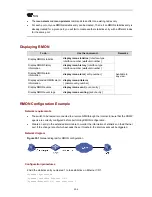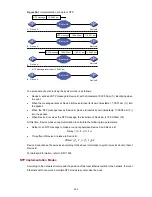
52
SNMP Configuration
Wh n configuring SNMP, go to these sec
e
tions for information you are interested in:
z
SNMP Overview
z
Configuring Basic SNMP Functions
z
Configuring Trap-Related Functions
anagement
z
Enabling Logging for Network M
Displaying SNMP
z
ation Example
z
SNMP Configur
SNM
can
ism and provides basic function set, it is suitable for small-sized
networks with fast-speed and low-cost. SNMP is based on User Datagram Protocol (UDP) and is thus
ucts.
SNMP
SNM
d agent.
only used network
or Write operation on the managed
MS.
When a network device operates improperly or changes to other state, the agent on it can also send
n initiative to the NMS to report the events.
SNMP
s as password. It can limit accesses made by
SNMP NMS to SNMP agent. You can perform the following community name-related configuration.
z
Specifying MIB view that a community can access.
P Overview
The Simple Network Management Protocol (SNMP) is used for ensuring the transmission of the
management information between any two network nodes. In this way, network administrators
easily retrieve and modify the information about any node on the network. In the meantime, they can
locate faults promptly and implement the fault diagnosis, capacity planning and report generating.
As SNMP adopts the polling mechan
widely supported by many prod
Operation Mechanism
P is implemented by two components, namely, network management station (NMS) an
z
An NMS can be a workstation running client program. At present, the comm
management platforms include QuidView, Sun NetManager, IBM NetView, and so on.
z
Agent is server-side software running on network devices (such as switches).
An NMS can send GetRequest, GetNextRequest and SetRequest messages to the agents. Upon
receiving the requests from the NMS, an agent performs Read
object (MIB, Management Information Base) according to the message types, generates the
corresponding Response packets and returns them to the N
traps on its ow
Versions
Currently, SNMP agent on a switch supports SNMPv3, and is compatible with SNMPv1 and SNMPv2c.
SNMPv3 adopts user name and password authentication.
SNMPv1 and SNMPv2c adopt community name authentication. The SNMP packets containing invalid
community names are discarded. SNMP community name is used to define the relationship between
SNMP NMS and SNMP agent. Community name function
52-1

